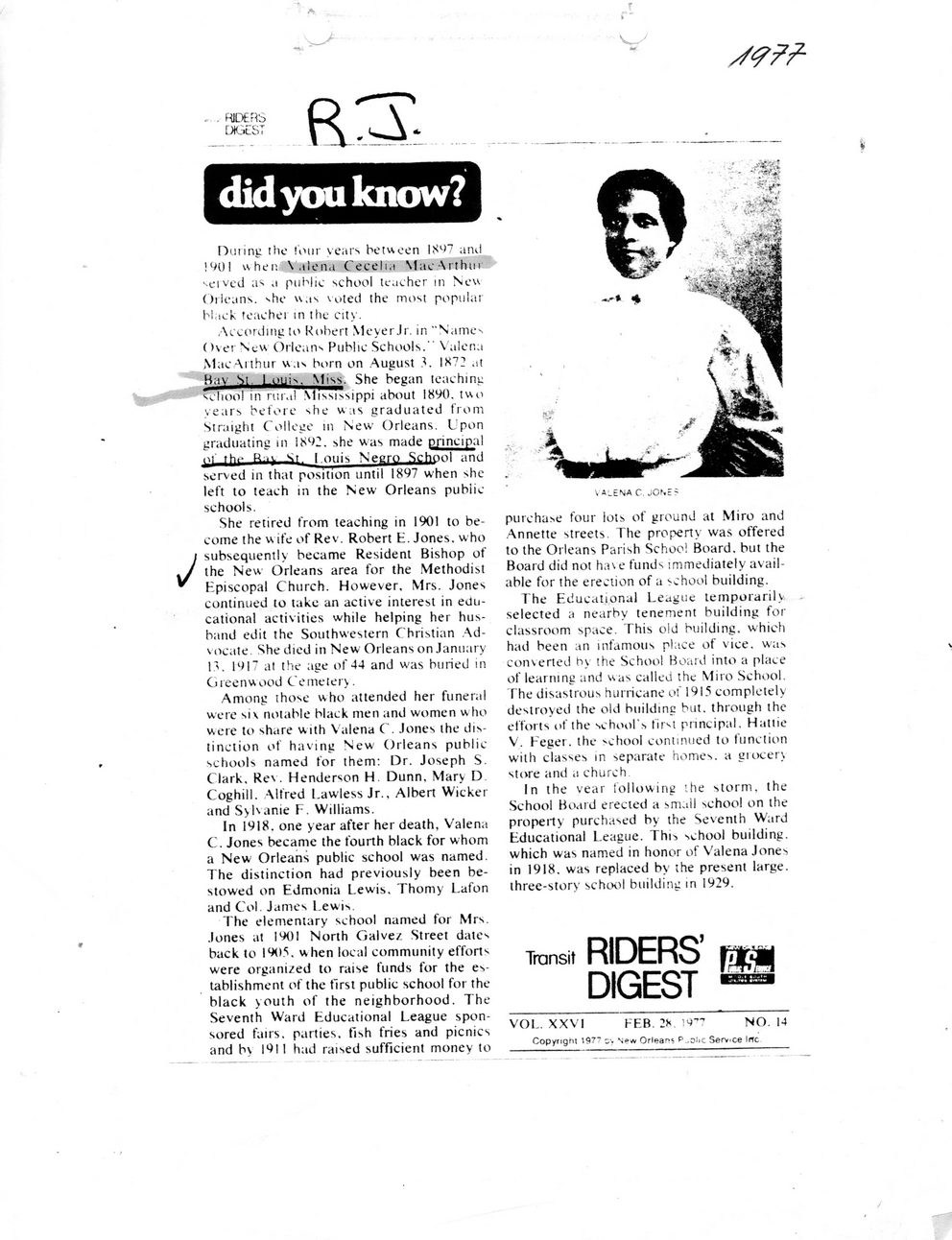This text was obtained via automated optical character recognition.
It has not been edited and may therefore contain several errors.
RIDERS \ UGlST * Duiing the lour year', between 1897 and !90| vs hen \ .ilena Cecelia Mac-\rthur reived a1' a public school teacher in New Orleans, -.he was voted the most popular black teacher in the city. According to Robert Meyer Jr. in "Names Over New Orleans Public Schools.'' Valeria Mac Arthur was born on August 3. 1872 at Ba^^J^^s^Miss. She began teaching school in rural Mississippi about 1X90. two years before she was graduated from Straight C ollege in New Orleans. Upon graduating in 1X92. she was made principal ^i R:n Si I nnis N'eero School and served in that position until 1897 when she left to teach in the New Orleans public schools. She retired from teaching in 1901 to become the w ife of Rev. Robert E. Jones, who subsequently became Resident Bishop of the New Orleans area for the Methodist Episcopal Church. However. Mrs. Jones continued to lake an active interest in educational activities while helping her husband edit the Southwestern Christian Advocate. She died in New Orleans on January I"'. 19|' at the age of 44 and was buried in Greenwood Cemetery. Among those who attended her funeral were siv notable black men and women who were to share with Valena C. Jones the distinction of having New Orleans public schools named for them: Dr. Joseph S. Clark. Re\. Henderson H. Dunn, Mary D Coghill. Alfred Lawless Jr., Albert Wicker and SyKanie F. Williams. In 1918. one year after her death, Valena C. Jones became the fourth black for whom a New Orleans public school was named. The distinction had previously been bestowed on Edmonia Lewis, Thorny Lafon and Col. James Lewis. The elementary school named for Mrs Jones at 1901 North Galvez Street dates back to 1905. when local community efforts were organized to raise funds for the establishment ofthe first public school for the black youth of the neighborhood. The Seventh Ward Educational League sponsored fairs, parties, fish fries and picnics and b\ 1911 had raised sufficient money to V ALENA c. JONE? purchase four lots of ground at Miro and Annette streets. The property was offered to the Orleans Parish School Board, but the Board did not ha\e funds immediately available for the erection of a school building. T he Educational League temporarily selected a nearby tenement building for classroom space. This old building, which had been an infamous place of vice, was converted by the School Board into a place of learning and was called the Miro School. T he disastrous hurricane of 1915 completely destroyed the old building but. through the efforts of the school s first principal, Hattie V. Keger. the school continued to function with classes in separate homes, a gtocer\ store and a church. In the vear following the storm, the School Board erected a small school on the property purchased by the Seventh Ward Educational League. This school building, which was named in honor of Valena Jones in 1918. was replaced by the present large, three-story school building in 1929. Transit RIDERS’ mm DIGEST ™ VOL. XXVI FF.B. > NO. 14 Copyright 197? Orleans P ,oiic Service Inc did you know?

Black History Valena-C.-Jones